As I drive up to the Midway Village Museum in Rockford, Illinois, I am greeted by a statue of a large sock monkey doll, with its hand extended as if to wave me in. I smile, matching the doll’s grin. I never owned a sock monkey, but it’s not hard to see why generations of children—and adults—have been enchanted by their warm, bright red smiles.
Rockford is perhaps best known as the birthplace of rock band Cheap Trick and the Rockford Peaches, a women’s baseball team immortalized in A League of their Own. But Rockford was also home to multiple sock factories that outfitted soldiers during World War I.
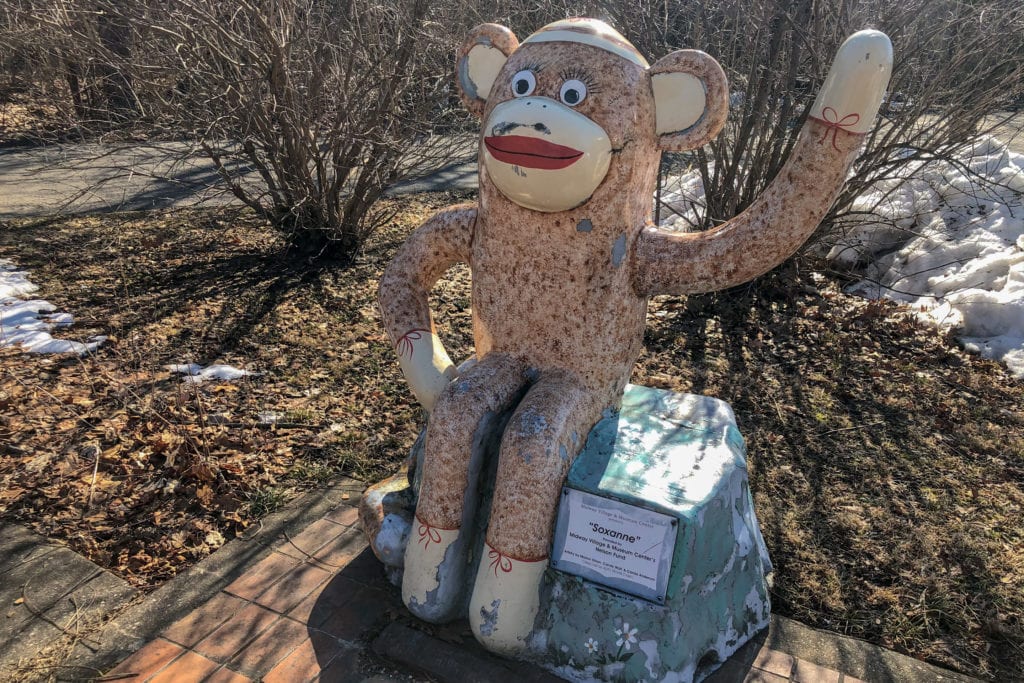

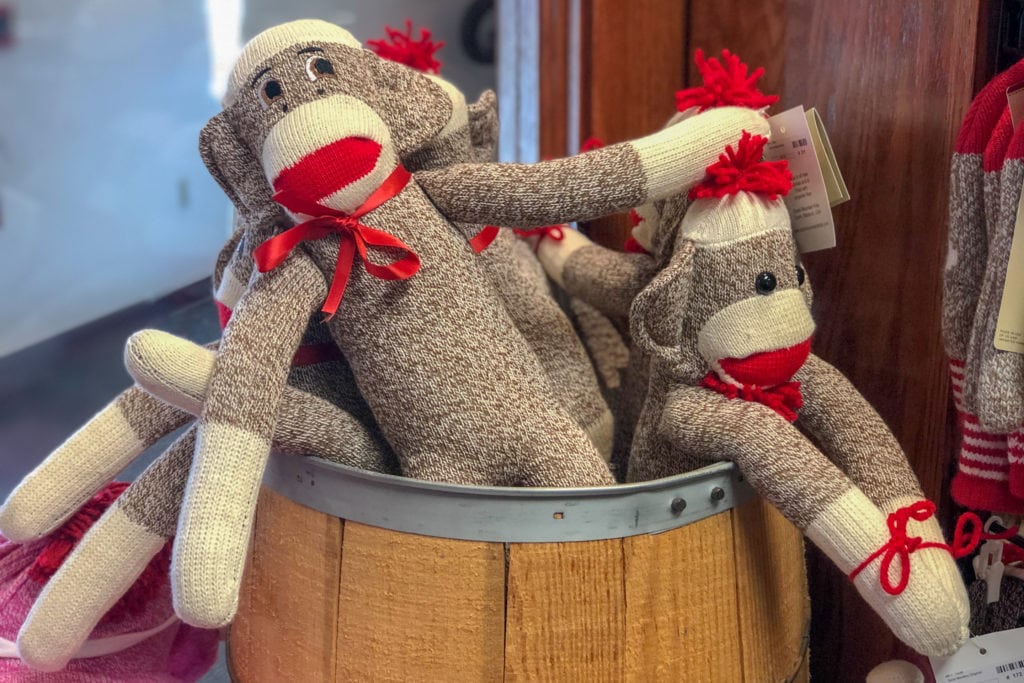
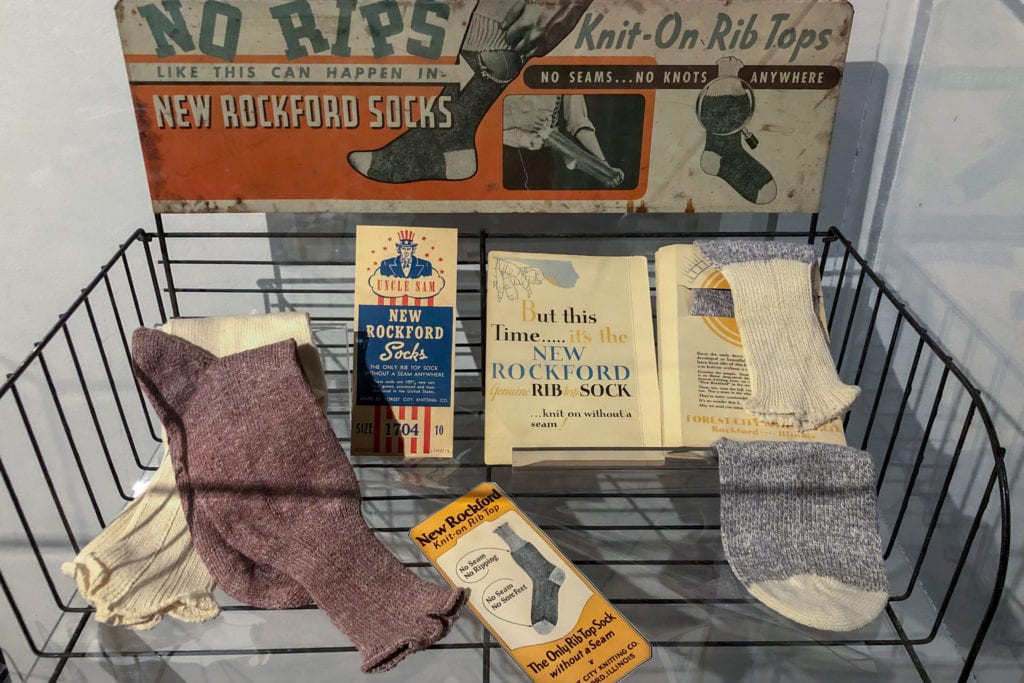
Three knitting companies made brown socks with a tan toe, top, and heel. The Nelson Knitting Company, in an effort to stand out from the pack, used red yarn for their heels, calling it the “De-Tec-Tip.” During the Great Depression, thrifty mothers used the socks to make dolls for their children. The Nelson Knitting Company began including instructions for making the dolls in each package of socks and in 1955, the company bought a patent for the design of the sock monkey.
Sixty-five years later, I’m in Rockford to attend the annual Sock Monkey Madness Festival, a celebration of all things related to the children’s toy with the iconic red smile.
Sockford General Hospital
As I step into the Midway Village Museum, I am greeted by smiling faces everywhere; children and adults are carrying dolls, and t-shirts, buttons, and books are adorned with images of the classic toy. The event gives fans the option to make or buy a new sock monkey, or repair an existing one.
The museum also features a year-round exhibit on the sock monkey’s history in Rockford. On display is Nelson, a 7-foot-tall sock monkey that greets visitors when he’s not on loan for community events and school functions. Presiding over the festival is Babs, a sock monkey named after the late “Sock Monkey Lady” Barbara Gerry, who wrote children’s books featuring the beloved toy.
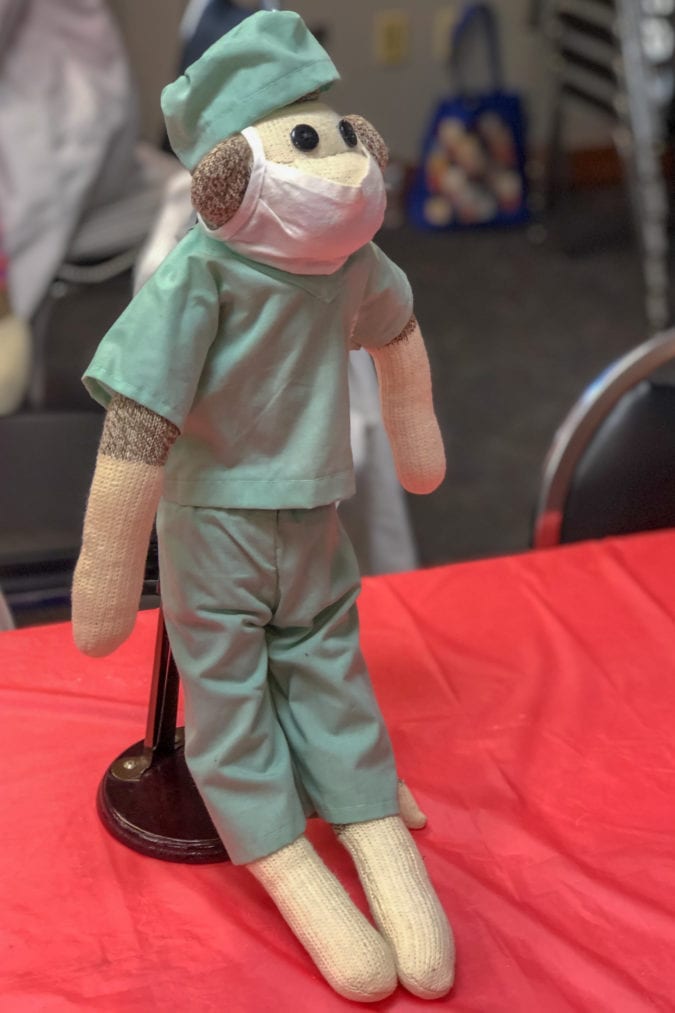
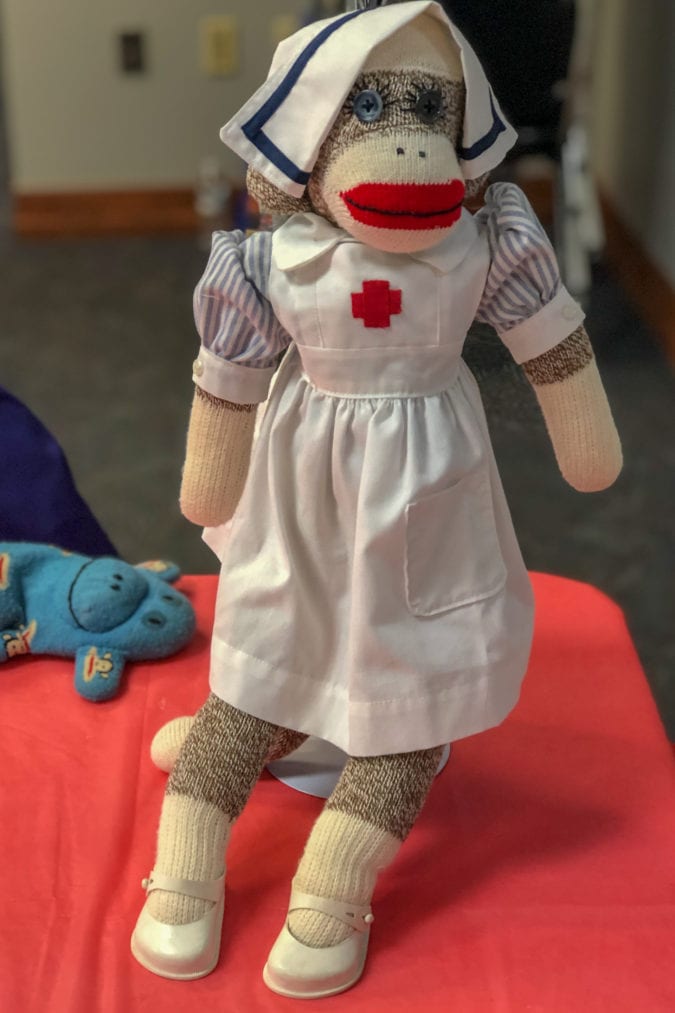
Gretchen Poffinbarger, a museum volunteer, is stationed at “Sockford General Hospital” for the day. Her experience in textiles means she’s playing “doctor” to the dolls needing repairs. Poffinbarger is wearing a doctor’s coat, and she smiles as she carefully stitches up tears in bellies or reattaches a button eye or tail. Once she completes a “surgery,” children collect their repaired monkey along with a certificate of good health. Poffinbarger occasionally receives a hug in return from a grateful child.
“Some of the dolls just need some repair,” Poffinbarger says. “We call them ‘well-loved.’”
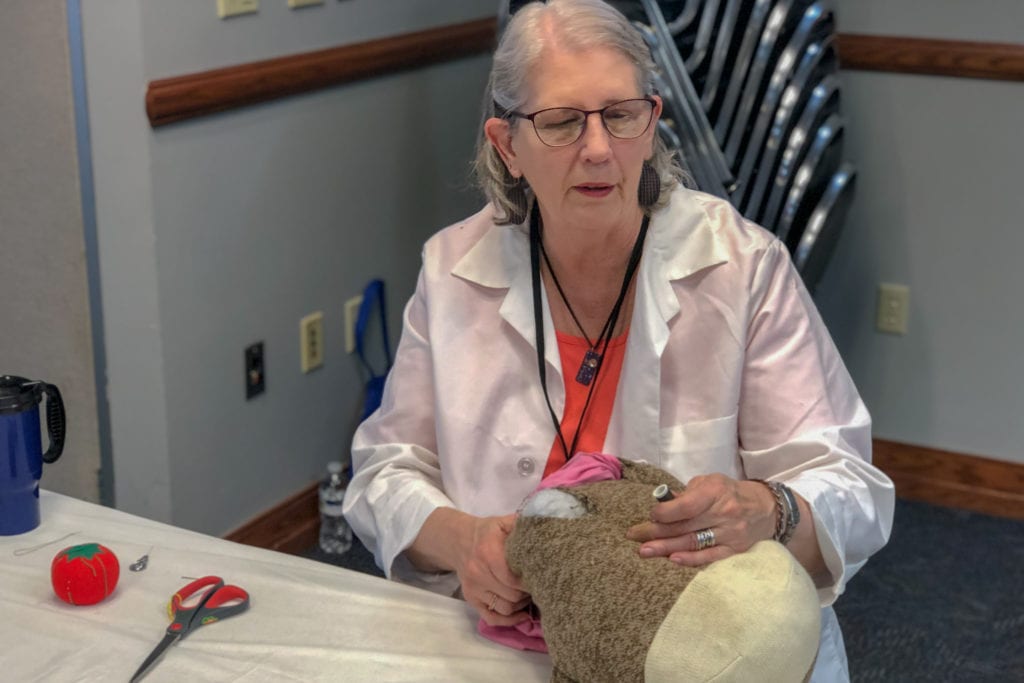
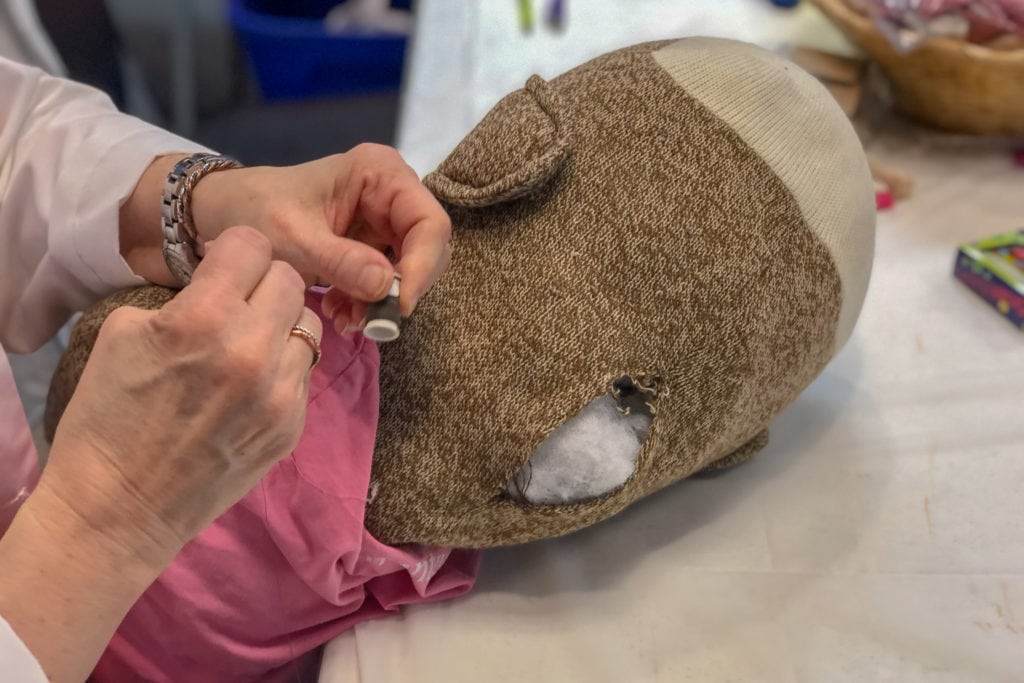
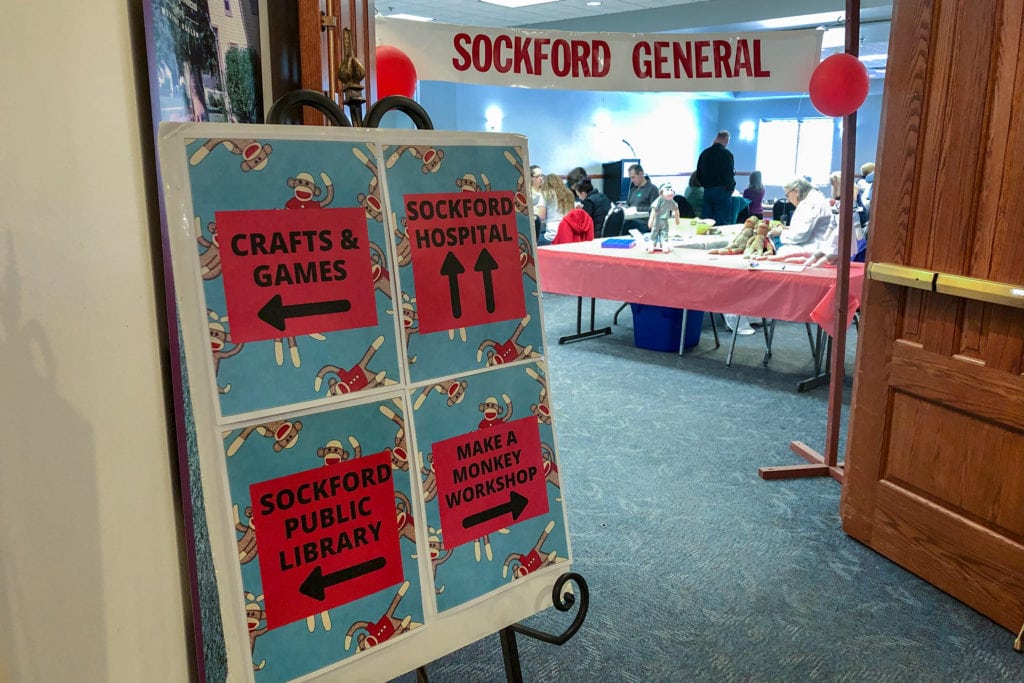
A family affair
I see the love everywhere. Families of all ages bond over the iconic toy, making monkey-themed crafts or filling a sock with stuffing. “It feels good to not be on my phone,” says Christina Saylor, who is making sock monkeys with her mother. “I’ve always loved sock monkeys, so I’m really glad we came today.”
Visitors can purchase kits with materials to make their own sock monkey, little to no sewing experience required. Each kit comes with instructions on how to cut out pieces from the socks, add stuffing, sew the pieces together, and then attach the fun stuff: mouth, ears, eyes, and other accessories. Costumes for the dolls are also available for purchase.
Alyssa McGhghy, special events coordinator for the Midway Village Museum, says the festival has been a hit with families and sock monkey enthusiasts for years. Although times are changing—and children’s toys have evolved dramatically over the years—sock monkeys still have the power to bring people together.
“We see grandparents bringing their grandkids,” McGhghy says. “But then we see adults here because they grew up with a sock monkey that meant a lot to them.”

Multi-generational memories
Emily Bellows has brought a pair of older, weathered, “well-loved” sock monkeys of her own, and put them on display for others to enjoy. It’s impossible not to smile as I listen to her recall good memories that involve her sock monkey toys.
Bellows’ mother, Deidre Early, grins as she remembers, too. The festival offers the mother-daughter duo a chance to spend time together, in the company of other sock monkey collectors. Bellows has had her monkeys for almost 40 years, and they were originally purchased in Rockford.
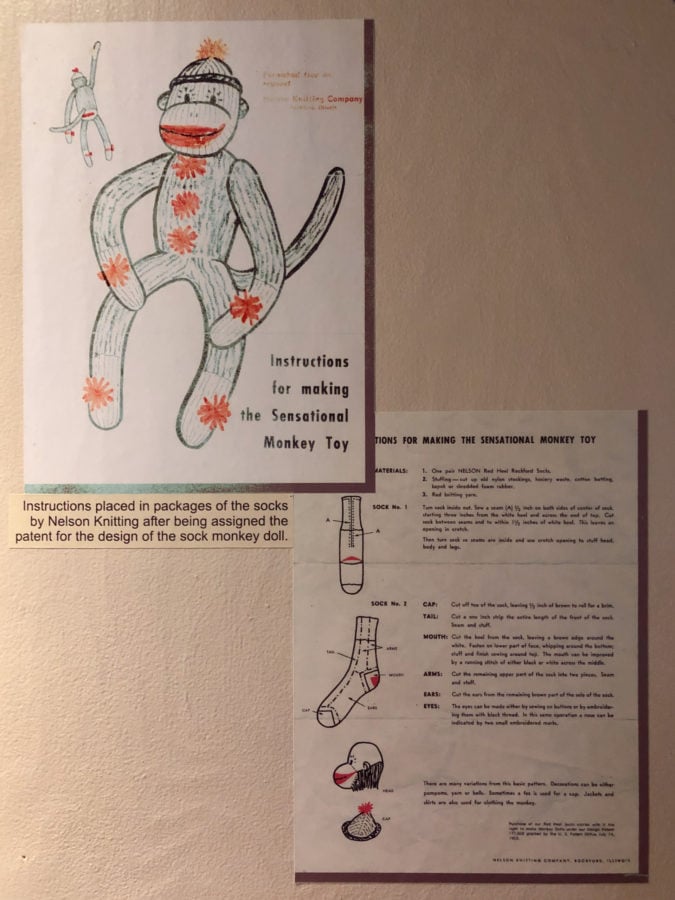

“It was so cute, when Emily saw it, she just really, really liked the sock monkey,” Early says. “Instead of a blanket or a teddy bear, for her, it was the sock monkey.”
Bellows nods. “My grandmother was always patching them up,” she says. “I just couldn’t bear to get rid of them.”
If you go
The Sock Monkey Madness Festival is held each March at the Midway Village Museum in Rockford, Illinois.







